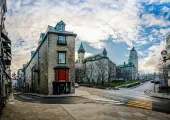A Must-Have Guide to Gion District in Kyoto
Catalogue
- Temples and Shrines
- 1.Kennin-ji
- 2. Chugen-ji
- 3. Yasaka Shrine
- 4. Yasui Konpira-gu Shrine
- 5. Ebisu-jinja shrine
- Meeting Geisha
- 1.Gion Corner
- 2. Minamiza Theater
- Festivals
- 1.Gion Matsuri
- 2. Toka Ebisu
- Dining Places
- 1.Gion Hatanaka
- 2. Izuju Sushi
- 3. Café Opa
- 4. Tsujiri
- How to get there?
Show More
A treasure house of Japanese tradition, Gion is one of the most eclectic and exclusive entertainment districts across the world. The traditional wooden houses that line the tiled streets of Gion are a sight in itself, and many visitors to Kyoto choose to stay in Gion as it provides easy access to several things to do while in Kyoto. The wooden machiya houses serve as anything from shops, restaurants, and even ochaya. Gion’s traditional teahouses. Many exclusive ochaya entertain the elite of Japan. Many of the establishments here have geiko and maiko who provide entertainment through traditional dance and music and keep guests indulged in conversations, to give a respite from the humdrum of daily life. The most famous area of Gion is Hanami-Koji streets lined with preserved machiya houses that serve traditional kaeiseki ryori cuisine. If you are a nature lover, a walk along the Shirakawa canal is sure to lift your spirits. The willow-lined alleyways are a beautiful place to catch an evening walk that gets you into a calm and peaceful mood, as you see geisha going about their daily routine. Gion’s shopping area allows you to pick up anything from quirky craft items to pickles and sweets. However, if you are looking for souvenirs and traditional crafts, you can take a stroll to Higayashima, where you can find more preserved streets. As an entertainment district, Gion has several things to offer from people from all walks of life.
A Zen temple, Kennin-ji, follows the Rinzai sect and is a very important temple in Japanese Buddhism. Founded by Eisai, the temple was built in the 13th century and is the oldest temple in Kyoto. Consisting of several rooms and about 20 small buildings arranged around large halls, the temple’s unique architecture features a variety of Japanese style gardens, including moss gardens. For the art enthusiasts, the temple is a delight as the sliding doors are lined with images of dragons and gods. The most famous artwork of the temple is the twin dragons painted on the ceiling in the main hall. The temple is about a ten-minute walk from Gion Shijo Station.
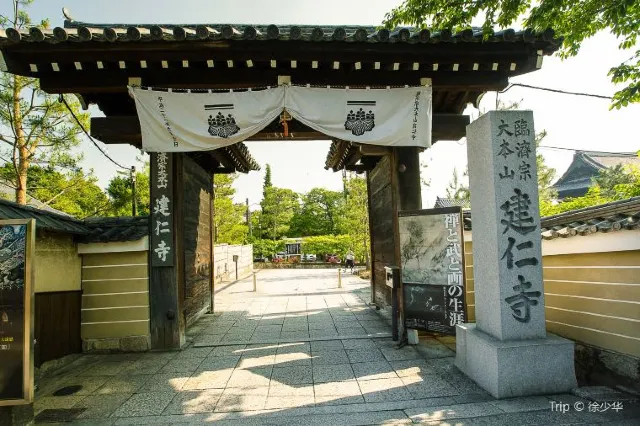
Belonging to the Jodo sect, Chugen-ji is colloquially known as Mayami Jizo. Originating in 1022, the temple’s legend is that it was used by guardians to save people from drowning during the heavy rains and flooding of the Kamogawa River of 1228. The statue of “Rain Stopping Jizo” or “Ameyami Jizo,” a monkish figure dressed in a red bib, is a tribute to this legend. A quiet little road-side temple, the temple provides a place of solace amidst the bustling streets for a quick stop.
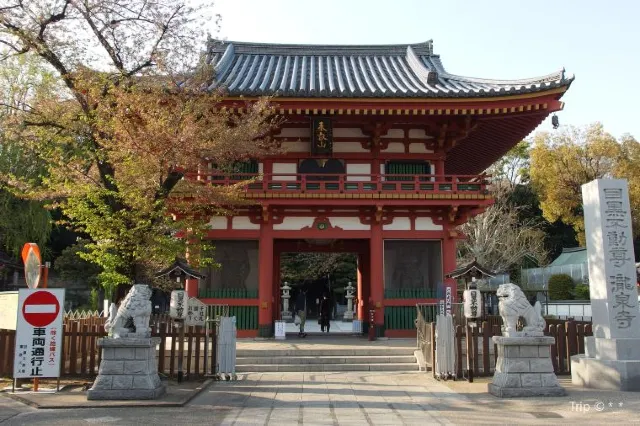
One of the most famous shrines in Kyoto, Yasaka, is an architectural beauty. Opposite to the main hall of Yasaka shrine, a dance stage doubles as the place to light lanterns in the evenings. Each lantern bears the name of a donor. If you’re in Kyoto during July, taking part in the Gion Matsuri, the summer festival allows you to revel in a tradition that dates back to more than a thousand years. Adjacent to the Yasaka shrine is Maruyama Park, one of the most revered cherry blossom locations in Kyoto. If you have the time, it is recommended that you take the 20-minute walk from Kiyomizudera to the Higayashima district to combine the visit with other fun things to do along this walkway.
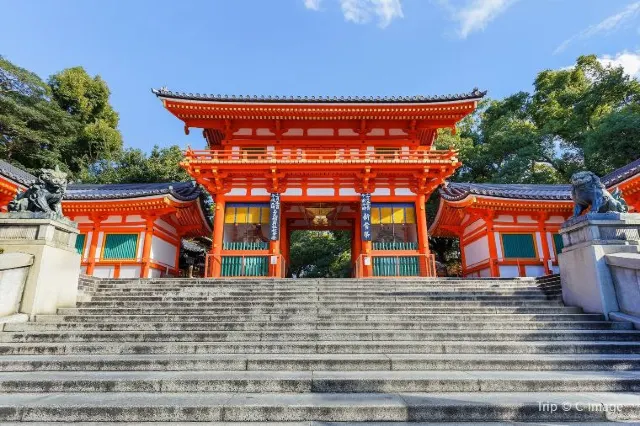
An eclectic shrine in the entertainment district of Kyoto, Yasui Konpara-gu, is gaining popularity amongst youngsters. The tradition here is to write down your wishes on a paper amulet, or Katashiro, crawl through an ema-shaped stone and pin the amulet on the stone to perform prayers for breaking unhealthy relationships and start new ones. Dating back to the 7th century, the Yasui Konpura-gu shrine has an interesting history attached to it that dates back generations. The shrine also displays a collection of glass art by American artist Chihuly. The place hosts a comb festival known as Koshi Matsuri popular among the geiko and maiko of Gion. The tradition is gathering old combs and hairpins in order express gratitude for the service. The other famous festival hosted by the shrine is the Shuki Konpira Taisa, during which lion dances performances are paraded around the streets.

Colloquially known as Ebissan, this shrine is dedicated to the patron god of business and fishermen, Ebisu. Several statues of fun-loving Ebisu occupy the gardens of this shrine with his iconic fishing pole. If you in Kyoto during January, you can witness business owners from all over Japan visit the shrine for the Toka Ebisu Festival. A visit to the shrine can be combined with the above mentioned Kennin-ji temple as the two are just a short walk from each other.
Many of the traditional Japanese ochaya establishments in Gion are not easily accessible to tourists, as they usually require insider recommendations for a table. However, if you still want to understand the performing lifestyle of Geisha women in Japan, a visit to Gion corner is recommended. The place is the front-runner encouraging the values and traditions of authentic Japan. The Japanese culture is celebrated in Gion Corner through performing arts such as Kyo-Moi by maiko dancers. Gion corner also hosts a Maiko gallery where you can catch a glimpse in understanding the daily beauty routine of a geisha woman. The gallery displays various hair decorations and other traditional items worn by the Geiko and Maiko. Gion Corner also hosts tea ceremonies, where guests are served tea in traditional ryueri style. If you are not comfortable kneeling for the tea ceremony, you will be provided with stools for seating. While in Gion corner, you may also be able to catch Koto performances, traditional Gagaku music performances, or even a comical theatre and a flower arrangement shown.
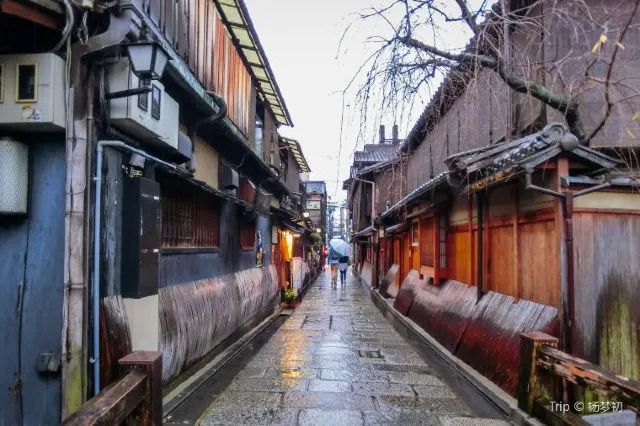
The traditional Japanese art form of Kabuki is a form of theatrical performance that dates back to the Edo period. Kabuki theater involves the usage of elaborate costumes and extravagant make-up combined with highly-stylized movements for immersive story-telling. The plots are usually historic events, love tales, and fairy tales. The performances are a delight to watch and is a great way to indulge in Japanese culture. While in the olden days, Kabuki was only performed in selected venues, now it can be witnessed even in Western-style theaters. Minamiza Theater in Kyoto’s Gion is one such theater that hosts kabuki performances throughout the year.
Hosted by the Yasaka Shrine, Gion Matsuri is widely considered as the most famous and grandest festival in Japan. The Gion Matsuri is a summer festival with several events and floats on the agenda. The processions of the parade are carried out in floats known as Yamaboko (a combination of the words Yama and hook). The Yama for the Gion matsuri weighs an enormous 12 tons and is 25 meters tall. The grandeur of this giant can be witnessed on July 17 each year as a procession is carried out along the Kamo river on the Shijo, kawaramachi and Oike streets. The Yama and hook are on display in Gion three days before the procession. As the dawn unfolds, the streets become a conglomeration of food and drink vendors and shops that sell festival hall makers. Other events during Gion matsuri include witnessing the assembly of floats without the use of nails! On the 17th, the mikoshi procession takes place where the Yasaka shrine's deity is carried on beams on the shoulders of men trough the town mikoshi and returned on the 24th. The festival dates back to 869. The event is a prayer against illness. It is the talk of the town during July, and all of Kyoto is involved in its activities.
A five-day tradition that pays homage to the god of fortune, Ebisu, Toka Ebisu takes place every January. Between the 8th and 12th of January, thousands of visitor’s throngs to the Ebisu Shrine in Gion district and offers prayers for success in work and business. To indulge in tradition, you should throw a coin into the donation box, bow twice deeply, clap twice, spend a moment in prayer, and bow again at the altar. During the festival, you can also catch performances on the kagura dance. Watching the talented women in traditional attire performing the rituals to summon the gods, as the pipe and drum play in the background is a sight to behold. If you would like to pick up trinkets, you can shop for the sacred lucky bamboo that has been blessed during the festivities called Fuku-Zasa. Other lucky charms and talismans are also common purchases. During the festival several interesting rituals are performed and each day brings something special within the temple premises. Toka Ebisu is also to see maiko, who give out rice cakes and lucky bamboo grass at the entrance of the main hall on January 11th.
A foreign-friendly ryokan in the heart of Higayashima, Gion, Kyoto Hatanaka offers regular entertainment from geisha. Hatanaka hosts Kyoto Cuisine and Maiko Evening, wherein a traditional kaiseki dinner is served to about 20 diners. You can even play drinking games with the apprentice geisha here. The place is lively and also has a communal bath in the property if you’d like to indulge in water therapy. Should you like the place, you can even choose to stay in one of its exquisite luxury rooms. Staying in Gion Hatanaka is a way to experience a traditional Japanese lifestyle while not missing out on modern amenities.
A trendsetter for traditional sushi, Izuju is one of the oldest establishments for Sushi in Kyoto. Izuju specializes in Kyoto style sushi. The most famous dish here is the Saba Sushi. The place boasts a rich history and is currently 4th generation business. If you are a Sushi fan, get ready to enjoy the delectable item in all its freshness at Izuju. Izuju is open from 10:30 am to 7:00 am. Izuju is closed on Wednesdays.
A modern café with a traditional twist, Café Opal is run by a couple who decided to renovate a traditional Japanese home in a new style. If you want to catch up on some alone time, the place is highly recommended as it makes you feel quite comfortable amongst the many bookshelves, garden seating areas, and more. You can try anything here from coffee, tea, desserts, beer, or a full lunch. The desserts at the café are all handmade. The café is situated on the back lane of the kenning-ji temple and can be combined with a visit to the temple. The owners are very friendly and make you feel very welcome.
If you’re a fan of the matcha flavor, you wouldn’t want to miss a visit to Tsujiri while you’re in Gion. The popular store specializes in matcha green tea and is known to have some eclectic offerings as well, from ice-creams and parfaits to smoothies and sweet treats. The name Tsujiri derives from the city of Uji, which is the capital for Japanese green tea. Tsujiri stabled 150 years ago at Uji. An authentic matcha café, Tsujiri has expanded considerably well and is now present even in international locations.
Gion-Shijo station on the Jeihan Line is the closest train station to Gion district. Alternatively, you could also take the Kyoto-Kawaramachi Station on the Hankyu line to get to Gion. If you prefer to travel by bus, you can take buses 100 or 206 from Kyoto station and get off at Gion stop.
Whether you’re just here to visit the place for a day or are wanting to spend more time by choosing your stay in Gion, the entertainment district is sure to make everyone fall in love with it. The perfect infusion of traditional Japan with modern highlights, Gion, Kyoto welcomes you and the country as well as no other. So, we can say that Gion is a place where you can dine with geisha, drink tea in an old machiya, and savor kaiseki. This is also a place that yields the most picturesque stock photographs of Kyoto. However, the result of this is unwieldy throngs of visitors, who crowd the nostalgic alleyways with large backpacks and unfathomable selfie-sticks. But don’t let the crowds come in your way from fully enjoying this quintessential Kyoto neighborhood.
Knowing the following insider tips makes it easier to see and appreciate all of Gion’s sites, capture some enviable photos, and perhaps even get you a table with Kyoto’s most elusive kimono-clad entertainers.
Trending Travelogues
Popular Trip Moments
Popular Travel Types
Popular Attractions
Popular Destinations
Recommended Attractions at Popular Destinations







Site Operator: Trip.com Travel Singapore Pte. Ltd.
